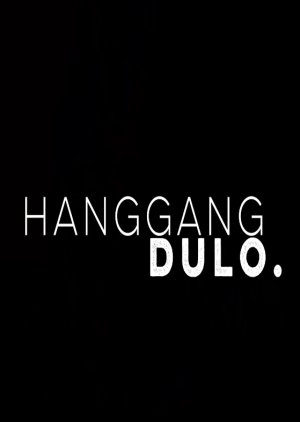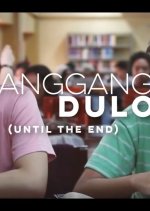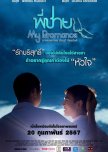- Português (Portugal)
- English
- magyar / magyar nyelv
- עברית / עִבְרִית
- Título original: Hanggang Dulo
- Também conhecido como: Until the end
- Gêneros: Romance
Resenhas

Esta resenha pode conter spoilers
I prefer to listen to "A Song for Wowie" by Nuna Esguerra.
"A Song for Wowie" by Nuna Esguerra is heard. The cheerful music takes us to an atmosphere of joy and hope. It is the moment when Vince (Patrick Laano), the young ABM student, meets Paolo (Neo García), the HUMSS student, on an elevated bridge that connects their respective faculties, at the University of Manila, the Philippine capital.Thus begins 'Hanggang Dulo', the 2019 Filipino short film, directed by Trina Indunan, winner of the Best Film Award at the MILk Film Fest 2019, created as a student thesis defense aimed at breaking down stigmas and prejudices surrounding HIV/AIDS, as well as to confront indifference, and meet all those who strive to make it visible.
In its 10 minutes of footage, we follow these two strangers who will soon be best friends and soon friends will also be lovers. Everything seems to be going well between the two, when, suddenly, Paolo discovers that Vince has hidden his HIV from him.
It is then that somber, sad, hopeless music envelops the viewer, and the chords of "Oppressed" by Yan Abelardo are heard.
I thought for a moment that deception and betrayal would be the essential components of the short, but we soon learn that Vince has acquired the disease through perinatal transmission of HIV, that is, by the transfer of HIV from an HIV-positive mother to her child during the pregnancy, childbirth or breastfeeding.
With the purpose of raising awareness, as well as support for people living with the virus, 'Hanggang Dulo' offers us themes related to romance, openness and understanding.
In addition to starring in it, Patrick Laano intervenes as co-director and editor of an audiovisual that has an original script written by Rica Razal and Ross Ramos, whose dramatic basis is made up of the hopelessness, fear and feeling of helplessness that the two young people experience in the face of illness and the fate of their lives.
Instead of walking away for fear of also contracting the disease, of questioning him, of appearing hurt or offended for having been ignorant of what is happening to Vince, Paolo becomes the patient's support. In this way, this film about AIDS is one of the many that have already been made on the subject that could almost be considered something similar to a subgenre.
Vince embodies an apathetic approach to the disease: he does not raise his fists against death and for the will to live, but rather he limits himself to continuing with what he has left or believes he has left of life as if the ominous shadow of his mortality were not It will accompany you everywhere. And she ends up abandoning Paolo to avoid suffering and pain? So as not to be a burden to him? Vince, tired, chooses to give up.
And this is the point where the short film fails. AIDS is not as deadly today as it was decades ago. From the report of the blood test results, we know that Vince goes to the laboratory on June 14, 2017. By then, HIV is no longer considered a fatal disease because survival in patients with HIV is longer by years. It is only fatal if it is not diagnosed and treated in time. This is not the case of the character.
If the person has HIV, they do not have to develop AIDS. Acquired Immune Deficiency Syndrome only occurs when the defenses cannot cope with opportunistic infections and other associated diseases because the defenses are weakened after years of HIV infection.
Despite Vince having developed an opportunistic infection, such as pneumonia diagnosed by his doctor, and having low levels of his defenses, the truth is that there are very good drugs against HIV, so much so that today it is not fatal, but rather a disease. chronicle. In addition to these, he has the prescription with the antibiotics in his hands.
Nothing makes me doubt that the young man does not follow his treatment correctly and take care of his body, so he can live a long and full life with HIV like anyone else.
The ending is open. As the final credits roll, the viewer watches as Vince approaches Paolo and, laughing, hugs him from behind. He is not surprised, and lets him do it. Has he been able to overcome the pneumonia? Is Paolo still waiting for you? Is it just Paolo's imagination? Did Paolo comply with what the doctor ordered, did he have blood tests done and has he also contracted the disease? Have they both died of AIDS and meet again in death to continue their romance?
It all happens on the same elevated bridge where they met, on the way to university, that day of joy and hope, while "A Song for Wowie" by Nuna Esguerra was listening.
There, instead of the wallet, they both stole each other's hearts. This is the final image I would like to take with me.
Esta resenha foi útil para você?
Recomendações
There have been no recommendations submitted. Be the first and add one.


















![[BL/gay/LGBTQ+] movies & short movies](https://i.mydramalist.com/kmL7O_4t.jpg)
![[BL/gay/LGBTQ+] movies & short movies](https://i.mydramalist.com/eVm48t.jpg)
![[BL/gay/LGBTQ+] movies & short movies](https://i.mydramalist.com/gZZ0Ot.jpg)
![[BL/gay/LGBTQ+] movies & short movies](https://i.mydramalist.com/7r3YBt.jpg)
![[BL/gay/LGBTQ+] movies & short movies](https://i.mydramalist.com/kDBwv_4t.jpg)

















